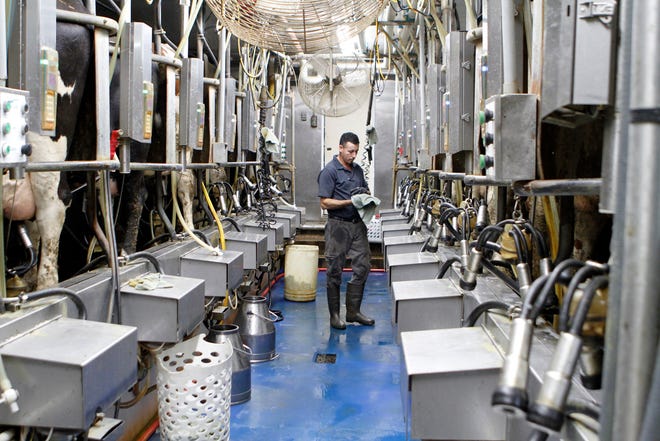Understanding your milk check: Premiums, components and more

If you find the numbers on your milk check confusing, it's not just you – milk checks are complicated and vary from cooperative to cooperative.
Ever.ag principal Mike North recently discussed the basics of the milk check on Dairy Stream, the podcast produced by the Dairy Business Association and Edge Dairy Cooperative. The topic was specifically requested by listeners.
North said consolidation among cooperatives and private processors in recent years has led to particular formats being used for the milk check, helping standardize what they look like, although nuances may vary. The basic identifiers, like your name, the coop name and patron and producer numbers, are easy, but North said you get into the "nitty gritty" when it comes to pricing and values of your milk.
On the milk check are milk receipts, which are run-throughs of every day that milk was hauled to the co-op, measuring by pounds. There's also reports on what's in the milk – butter fat, protein and solids measurements are important because the higher levels of components, the more valuable the milk is in most cases, North said.
Then there's co-op premiums and deductions for market adjustments and producer price differentials, North said, that affect the net outcome of the check. Those vary too depending on the co-op.
"There are some companies that pay for certain temperatures of milk. There are obviously other pieces of milk – if the milk contains the a2 component, there are people that are being paid extra for that," North said.
While there are local and regional pay differences, North said federal milk marketing orders do standardize how producers are paid for their milk using key elements like pounds produced, butter fat, protein and solids. Some milk checks also report bacteria counts in varying ways. The way you are charged for milk hauling may also differ depending on the co-op, but "the big pieces will always be there," said North.
Class III milk, used for cheese and whey, represents most of the milk produced in Wisconsin and the Midwest region. North said the standard rate of butter fat is 3.5%, while protein is 2.995% and solids 5.7%, but value becomes greater if these percentages go over that standard. Co-ops may also offer premiums based on the milk quality and a low somatic cell count, North added.
"You're going to see other premiums and deductions that are added or subtracted to the milk check, things like market adjustments, Class I differentials, somatic cell, raw bacteria," North said. "You'll see, as it's all brought together, a summary of all of these different values for butter fat, protein and other solids, together with the premiums and deductions. And then that yields your final net pay."

The US Department of Agriculture releases the National Dairy Products Sales Report once a week, which analyzes the average price for all milk products across the country, with focus on butter, cheese, whey and nonfat dry milk. North said the market determines the value of butter fat, protein and solids through those prices depending on product, which then become the building blocks for determining class price.
Class I is fluid milk, Class II is soft milk for things like ice cream and sour cream, Class III is for cheese and whey and Class IV is for butter and milk powder.
North said Wisconsin's dairy industry went through expansion about five years ago, increasing milk production, but neighboring states like Michigan had excess milk and led to imports from the state to Wisconsin. But now that Michigan has built the largest cheese plant in the country, North expects milk to go the other way, which will help Wisconsin flip from being an importer state to an exporter state, creating more premiums for demand.
"Because we've maintained more of a deficit milk type of an environment, Wisconsin, for being the dairy state, has ultimately been a net milk importer for a very long time up until very recently," North said. "Now that we're seeing this new demand in Michigan, we believe that that will start to bring some of those former characteristics back to the marketplace as we compete for more and more milk inside of our state."
Producers should only focus on what they can control, North said. Producers aren't responsible for the FMMO prices determined on their check, but they are responsible for the quantity and quality of their milk, North said. He suggested comparing the information on milk checks between months and years to look for ways to improve their product and expand production.
"You can control what your milk production is, what your milk solids are, and then what your qualities are – your somatic cell and some of those other bacteria counts," North said. "Ultimately, those are the things that, from a management perspective, that you can really hone in on and say, okay, how am I doing here."